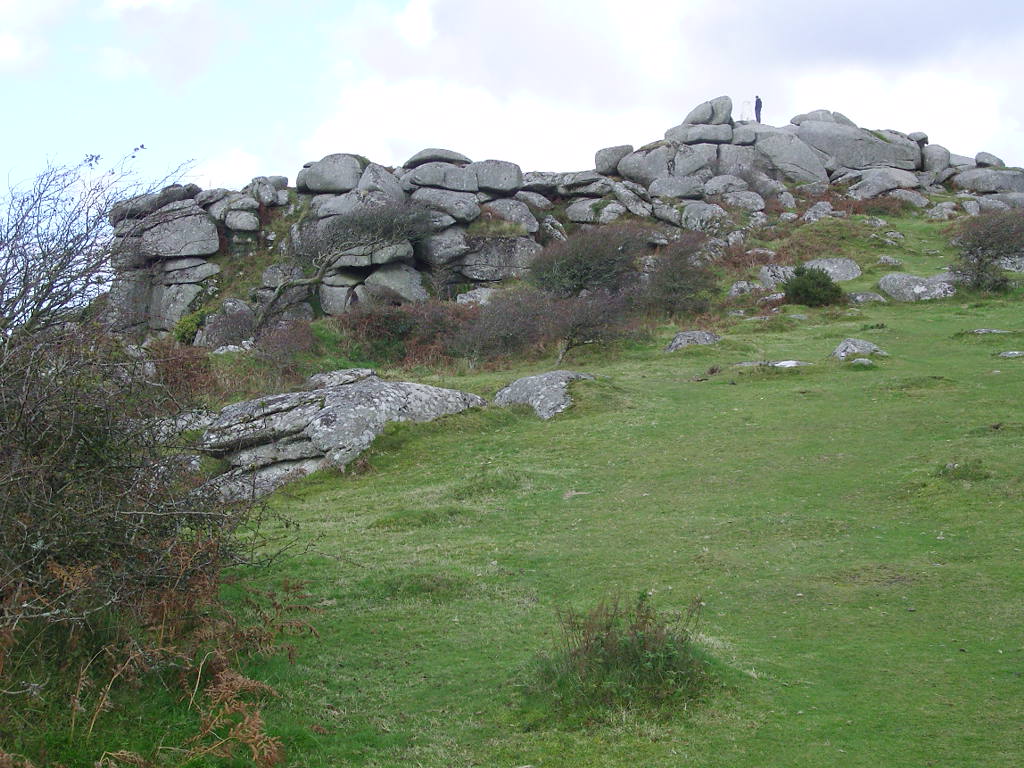Tor enclosure on:
[Wikipedia]
[Google]
[Amazon]
 A tor enclosure is a type of prehistoric monument found in the southwestern part of
A tor enclosure is a type of prehistoric monument found in the southwestern part of
Great Britain
Great Britain is an island in the North Atlantic Ocean off the north-west coast of continental Europe, consisting of the countries England, Scotland, and Wales. With an area of , it is the largest of the British Isles, the List of European ...
. These monuments emerged around 4000 BCE in the early Neolithic
The Neolithic or New Stone Age (from Ancient Greek, Greek 'new' and 'stone') is an archaeological period, the final division of the Stone Age in Mesopotamia, Asia, Europe and Africa (c. 10,000 BCE to c. 2,000 BCE). It saw the Neolithic Revo ...
.
Tor enclosures are large enclosures situated near natural rock outcrops, especially tor
Tor, TOR or ToR may refer to:
Places
* Toronto, Canada
** Toronto Raptors
* Tor, Pallars, a village in Spain
* Tor, former name of Sloviansk, Ukraine, a city
* Mount Tor, Tasmania, Australia, an extinct volcano
* Tor Bay, Devon, England
* Tor ...
s, on hilltops or the sides of hills. They consist of one or more roughly circular stone walls built around the tor. They are comparable to the causewayed enclosure
A causewayed enclosure is a type of large prehistoric Earthworks (Archaeology), earthwork common to the early Neolithic in Europe. It is an enclosure (archaeology), enclosure marked out by ditches and banks, with a number of causeways crossing ...
s found elsewhere in the British Isles
The British Isles are an archipelago in the Atlantic Ocean, North Atlantic Ocean off the north-western coast of continental Europe, consisting of the islands of Great Britain, Ireland, the Isle of Man, the Inner Hebrides, Inner and Outer Hebr ...
and many are of similar Neolithic
The Neolithic or New Stone Age (from Ancient Greek, Greek 'new' and 'stone') is an archaeological period, the final division of the Stone Age in Mesopotamia, Asia, Europe and Africa (c. 10,000 BCE to c. 2,000 BCE). It saw the Neolithic Revo ...
date although others are from later in prehistory.
Examples
The best known examples are Carn Brea inCornwall
Cornwall (; or ) is a Ceremonial counties of England, ceremonial county in South West England. It is also one of the Celtic nations and the homeland of the Cornish people. The county is bordered by the Atlantic Ocean to the north and west, ...
, the first to be identified, following excavations in the early 1970s, and Helman Tor between Bodmin
Bodmin () is a town and civil parish in Cornwall, England, United Kingdom. It is situated south-west of Bodmin Moor.
The extent of the civil parish corresponds fairly closely to that of the town so is mostly urban in character. It is bordered ...
and Lostwithiel
Lostwithiel (; ) is a civil parish and small town in Cornwall, England, United Kingdom at the head of the estuary of the River Fowey. According to the 2001 census it had a population of 2,739, increasing to 2,899 at the 2011 census. The Lostwi ...
also in Cornwall.
Other possible examples are:
* Rough Tor on Bodmin Moor
Bodmin Moor () is a granite moorland in north-eastern Cornwall, England, United Kingdom. It is in size, and dates from the Carboniferous period of geology, geological history. It includes Brown Willy, the highest point in Cornwall, and Rough To ...
, Cornwall
Cornwall (; or ) is a Ceremonial counties of England, ceremonial county in South West England. It is also one of the Celtic nations and the homeland of the Cornish people. The county is bordered by the Atlantic Ocean to the north and west, ...
* Stowe's Hill, also on Bodmin Moor
* Whittor on Dartmoor
Dartmoor is an upland area in southern Devon, South West England. The moorland and surrounding land has been protected by National Park status since 1951. Dartmoor National Park covers .
The granite that forms the uplands dates from the Carb ...
.
See also
* Tor cairnReferences
Types of monuments and memorials Stone Age Britain {{UK-archaeology-stub